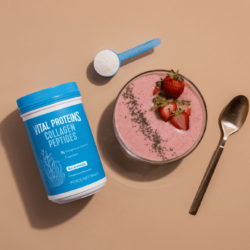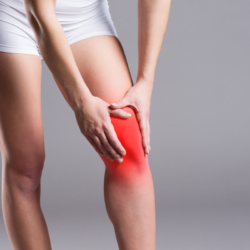Osteoarthritis is caused by deterioration of the cartilage in the joints. This deterioration causes intense pain caused by constant rubbing of the bones. In the majority of cases, this pathological disease affects the hips, spine, fingers and knees. To date, there is no cure for osteoarthritis. Nevertheless, whatever the area affected, specialists agree that regular physical activity helps to relieve it. So, in this article, find out how to get moving to relieve osteoarthritis of the knees!
Osteoarthritis of the knees in a nutshell
Osteoarthritis of the knees, or gonarthrosis, is caused by the loss of cartilage in the knee joints. It occurs in two forms: patellofemoral osteoarthritis and femorotibial osteoarthritis. Patellofemoral osteoarthritis affects the joint between the patella and the femur, while tibiofemoral osteoarthritis occurs between the femur and the tibia (on the inside or outside of the knee). In both cases, the discomforts caused by this pathological condition remain the same: bone rubbing, joint painmotor difficulties, weakening of the lower limbs, loss of mobility, etc
The benefits of movement in the case of gonarthrosis
Under normal circumstances, it is not advisable to make too much physical effort when suffering from gonarthrosis. Putting too much strain on the joints in this condition can actually aggravate the situation. Paradoxically, however, specialists recommend regular gentle exercise for a number of reasons:
- Maintenance of the joints to reduce the pain associated with the disease
- To lose weight to reduce pressure on the knees and bone friction
- Honing the joints to facilitate movement over the long term
Gentle physical exercise to relieve osteoarthritis of the knees
Osteoarthritis of the knee is a common joint disease and a major cause of pain and functional limitation in adults. Although there is no definitive cure for osteoarthritis, physical exercise is proving to be an effective non-pharmaceutical therapy, with a significant impact on pain reduction, improved physical function and quality of life. (8)(9)
Recommended exercises
- Swimming or water aerobics: The water offers gentle resistance, which helps to strengthen the muscles without exerting excessive pressure on the knees. (10)
- Daily walking: Regular walking, 30 to 45 minutes a day, is beneficial for joint health.
- Cycling: Cycling helps to work the leg muscles while minimising the impact on the knees.
- Yoga or Tai-Chi: These disciplines promote balance and flexibility, and help relieve the symptoms of osteoarthritis. (10)
- Muscle strengthening: Muscle strengthening exercises, carried out with the help of a specialist coach, can strengthen the muscles and tendons surrounding the knees, thereby reducing pain.
- Physiotherapy: A physiotherapist can provide specific exercises adapted to your condition, improving knee function.
Best practices for relieving osteoarthritis of the knees:
Osteoarthritis of the knees can be a source of daily pain and discomfort. Fortunately, there are a number of natural and proven methods for alleviating these symptoms:
- Regular exercise: As we saw earlier, strengthening the muscles around the knees is crucial. Gentle, appropriate exercise can improve knee stability and reduce pain.
- Weight management: If you are overweight, losing even a few kilos can considerably reduce the pressure on your knees, thereby relieving the pain.
- Heat and Cold Therapies: Alternating hot and cold compresses can help relieve pain and inflammation.
- Nutritional supplements: Glucosamine, collagen and turmeric are known for their beneficial properties on joint health. They can help reduce inflammation and improve mobility.
- Essential oils: Oils such as lavender and peppermint have natural anti-inflammatory properties that can help soothe pain.
- Anti-inflammatory diet: Including foods rich in omega-3, such as oily fish, and limiting sugar and dairy products, can help reduce inflammation throughout the body.
- Professional consultation: In the event of persistent pain or worsening symptoms, it is advisable to consult a healthcare professional, such as a physiotherapist or chiropractor, for further treatment.
Is knotweed effective for osteoarthritis?
Knotted arrowweed is a medicinal plant that has long been used to treat a variety of health problems, including scrofula, respiratory problems, skin disorders and muscle and joint pain. In the case of osteoarthritis of the knee, studies have shown that Knotted Scrofula can be beneficial in reducing inflammation and relieving pain.
Osteoarthritis is a degenerative joint disease characterised by the progressive wearing away of cartilage. This wear and tear can cause pain, swelling and joint stiffness. The use of Knotted Scrofula can help reduce inflammation in the joints, which can relieve pain and stiffness.
One study showed that extract of knotweed had significant anti-inflammatory effects in rats with arthritis. The results showed that Knotted Weed reduced joint inflammation and lessened pain. However, it is important to note that research into the use of Knotted Weed to treat osteoarthritis is limited. Further research is needed to determine the effectiveness of this medicinal plant for this specific disease.
The intestinal microbiota: a key player in the treatment of osteoarthritis
As part of our exploration of natural approaches to the treatment of osteoarthritis, it is essential to consider the potential role of the gut microbiome. Recent research has begun to reveal how our gut flora can influence joint health, particularly in the context of osteoarthritis (5)
- Studies indicate that the gut microbiome is closely linked to host physiology and pathology, and may play a role in the pathogenesis of osteoarthritis, a disease characterised by the destruction of articular cartilage and the formation of osteophytes. The complex interactions between personal risk factors, such as age, gender and obesity, and osteoarthritis could be partly regulated by the gut microbiome, which acts as a hidden risk factor by providing a unifying mechanism for these diverse influences.
- In addition, specific studies have examined the effects of metabolic syndrome, obesity and the gut microbiome on load-induced osteoarthritis, highlighting the potential impact of the microbiome on the development of this degenerative joint disease.
- The therapeutic potential of modulating the intestinal microbiota is also being studied, with research underway into the impact of this modulation on osteoarthritis. This could lead to innovative strategies for the treatment of osteoarthritis, by specifically targeting the intestinal microbiome.
- Finally, a systematic review has examined the mechanistic understanding of the link between intestinal permeability and osteoarthritis, paving the way for a better understanding of the pathogenesis of osteoarthritis and the resulting therapeutic approaches.
These findings are promising and suggest that maintaining a healthy gut microbiome could be a key factor in the prevention and management of osteoarthritis. Although further research is needed to confirm these links and develop concrete treatments, it is clear that our gut health is inextricably linked to our overall health, including the health of our joints.
Source:
- https://bougetesgenoux.com/exercice-avec-de-larthrose-au-genou/
- https://www.qare.fr/sante/arthrose/genou/
- http://centre-orthopedique-santy.com/rhumatologie-pathologies-jai-de-larthrose-quels-sports-sont-conseilles/
- https://fr.wikipedia.org/wiki/Gonarthrose
- https://pubmed.ncbi.nlm.nih.gov/27610004/
- https://www.researchgate.net/publication/245783707_Structure_et_metabolisme_du_cartilage_articulaire
- https://pubmed.ncbi.nlm.nih.gov/26521745/
- https://pubmed.ncbi.nlm.nih.gov/33666347/
- https://josr-online.biomedcentral.com/articles/10.1186/
- https://pubmed.ncbi.nlm.nih.gov/37346776/







